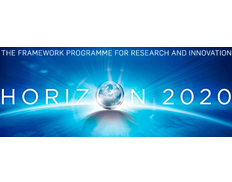Share
Print

Flash information on the overall results of the H2020-TWINN-2015 call for proposals is available
A total of 553 proposals were submitted in response to this call.
The Frequently Asked Questions (FAQs) for the TWINNING call have been updated.
The submission session is now available for: H2020-TWINN-2015(CSA)
| Topic identifier: | H2020-TWINN-2015 | ||
| Publication date: | 02 July 2014 | ||
| Types of action: | CSA Coordination and support action | ||
| DeadlineModel: Opening date: |
single-stage 02 July 2014 |
Deadline: | 07 May 2015 17:00:00 |
| Time Zone : (Brussels time) | |||
Specific challenge: The specific challenge is to address networking gaps and deficiencies between the research institutions of the low performing Member States and regions and internationally-leading counterparts at EU level. Driven by the quest for excellence, research intensive institutions tend to collaborate increasingly in closed groups, producing a crowding-out effect for a large number of promising institutions. This is the challenge that a specific Twinning action will try to address.
Scope: Twinning aims at significantly strengthening a defined field of research in a particular knowledge institution (a research active university or a public research organisation or a private non-profit research organisation) by creating a link between this institution and at least two internationally-leading research institutions in other Member States. Twinning will:
Successful Twinning proposals will have to clearly outline the scientific strategy for stepping up and stimulating scientific excellence and innovation capacity in a defined area of research as well as the scientific quality of the partners involved in the twinning exercise. They are also encouraged to explain how the Twinning activity will contribute to the overall Smart Specialisation Strategy of the specific location of the initiating institution.
Such a strategy should include a comprehensive set of measures to be supported. These should include at least a number of the following : short term staff exchanges; expert visits and short-term on-site or virtual training; workshops; conference attendance; organisation of joint summer school type activities; dissemination and outreach activities. Twinning activities will provide no support to infrastructure and equipment and no support for hiring new permanent research staff.
The Commission considers that proposals requesting a contribution from the EU of EUR 1 million, would allow this specific challenge to be addressed appropriately. Nonetheless, this does not preclude submission and selection of proposals requesting other amounts.
Expected impact: There will be a measurable and significant improvement in the overall scientific and innovation capacity of the initiating institution in a particular field of research through linking with research intensive counterpart institutions in other Member States and thereby expect positive impacts on the overall research and innovation potential of the Member State or the region the initiating institution is located in. Such improvement could be measured through an increase of peer-reviewed publications, increased impact factors in terms of citations etc.
Impact indicators should reflect an increase in relative terms based on the situation before the project compared to the projected situation immediately after the project is completed, as well as within the foreseeable future after completion. These indicators are important for determining the potential regional and national impact, as well as long-term sustainability and viability of the beneficiary organisations.
Type of action: Coordination and support actions
